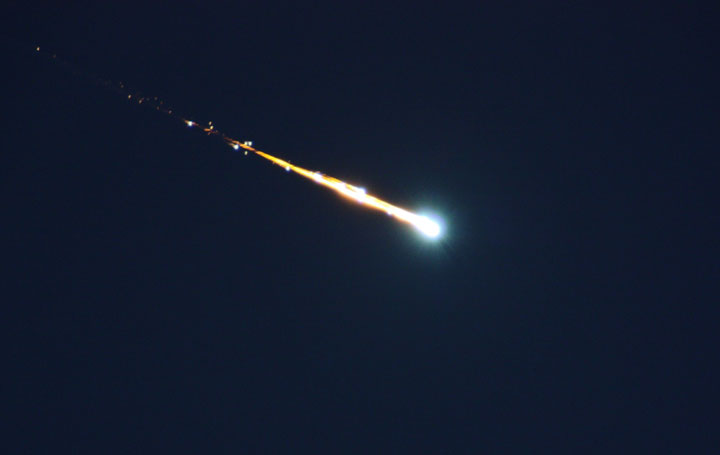TORONTO – Earth has received its first asteroid visitor for 2014.

According to the International Astronomical Union’s Minor Planet Electronic Center (MPC), asteroid 2014 AA likely hit the Earth’s atmosphere on Jan. 2.
“It is virtually certain that 2014 AA hit the Earth’s atmosphere,” the MPC reported. “The impact locations are widely distributed, most likely falling on an arc extending from Central America to East Africa, with a best-fit location just off the coast of West Africa.”
READ MORE: Doomsday asteroids: Here we go again

Get daily National news
Steve Chesley, an astronomer with the Jet Propulsion Laboratory’s Near Earth Object office, said that the asteroid was discovered less than 20 hours after impact.
The asteroid was unlikely to have survived the entry into our atmosphere.
Scientists continue to analyze the data in an effort to determine its origin.
According to NASA, a few weak signals have been collected from infrared sound stations which measure sounds in the atmosphere.
“The apparent confirmation of the impact is right on top of the prediction area that I put out last night,” Chesley said. “So it’s in perfect agreement in terms of time and place, in the mid-Atlantic around 3:00 UTC.”
The good news is, it didn’t impact anywhere. Sadly, due to its location over the Atlantic Ocean, there were no dashboard camera views to capture any fireballs as there was with last year’s Chelyabinsk meteor.
READ MORE: Science stories that blew our minds in 2013
The asteroid is believed to have been similar in size to asteroid 2008 TC3, which was roughly 80 tonnes and 4.1 metres. 2008 TC3 lit up the the sky in the early morning over Northern Sudan on Oct. 7, 2008, entering Earth’s atmosphere at 12.4 km/s and releasing the equivalent of 1 kilotons of TNT.
That asteroid was discovered just 21 hours before breaking up over Sudan.
Like 2008 TC3, 2014 AA was observed before it entered the atmosphere, making it only the second asteroid that was observed prior to impact.






Comments